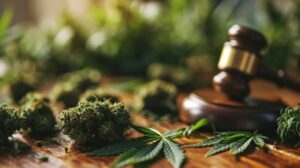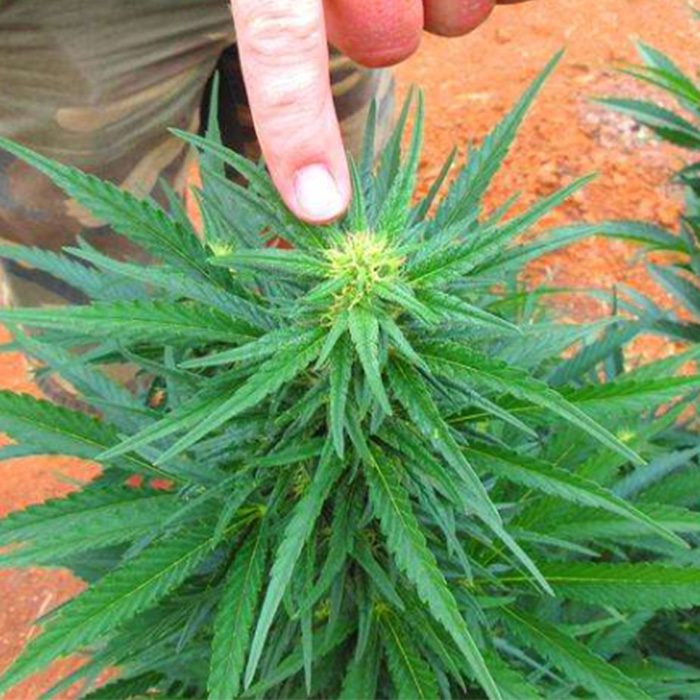

The 2018 Farm Bill granted the federal legalization of hemp, which includes all growing and manufacturing of the plant. As a result, hemp growers–like our founders at Dama Botanicals–were able to expand their knowledge and experience of cultivating to legally sell hemp. But what does that mean for you? What is hemp vs marijuana?
Hemp is a cannabis plant containing less than 0.3% of delta-9 THC concentration by dry weight of the plant.
Marijuana is a cannabis plant containing more than 0.3% of delta-9 THC concentration by dry weight of the plant.
According to federal law and Texas legislation, all hemp products must contain less than 0.3% Delta 9 THC (tetrahydrocannabinol) by dry weight in order to be legally manufactured and sold.
This means that the legal difference between marijuana and hemp in Texas is the presence of 0.3% Delta 9 THC (tetrahydrocannabinol). But, there are hundreds of cannabinoids in the cannabis sativa plant!!
Because of this, Dama Botanicals is proud to offer legal, safe hemp products that spotlight what these many different therapeutic cannabinoids have to offer.


Cannabidiol, also known as CBD, is a major cannabinoid found in hemp and cannabis. There are no psychoactive effects of this cannabis compound that will get you high, but it has become widely popular for its alleviating and beneficial health effects. From sleep disorders, anxiety, inflammation, and even chronic pain or muscle spasms, CBD has been proven to be strongly therapeutic in a variety of health and wellness uses.

Also found naturally in hemp and cannabis, Tetrahydrocannabinol Acid is the non-psychoactive precursor to Delta 9 THC, and the beginning state for all the Delta 9 THC found in the cannabis sativa plant. When exposed to heat, THCA decarboxylates (loses the A) and converts into Delta-9 THC.

Delta-9 tetrahydrocannabinol (also referred to as simply, “Delta-9″ or “THC” is the most well known and favored cannabinoid because of its psychoactive effects. Abundant in cannabis and found in hemp, Delta-9 THC helps target chronic pain and muscle spams, ease nausea, help with sleep or eating disorders, and much, much more!

Another isomer to tetrahydrocannabinol, Delta-10 shares similar effects to its partner cannabinoid Delta-9 THC by relieving stress and tension, without the risk of intense psychoactive effects, such as paranoia or anxiety. Compared with Delta-8 and Delta-9, Delta-10 provides an overall slight high and calming feeling.

THCP is one of the newly discovered cannabinoid powerhouses, known to produce an intensely stronger high compared to Delta-9 THC. Found in hemp and cannabis, THCP binds with CB1 and CB2 receptors the way THC does to induce strong psychoactive properties.

Derived from hemp, THCO is a newly discovered cannabinoid that produces a euphoric high and psychoactive effects similar to common THC in cannabis. THCO is even estimated to be roughly three times stronger than THC, while known for its anti-nausea, anti-anxiety, appetite stimulating and stress reducing properties.

Cannabigerol is not psychoactive, but a commonly found compound in hemp. This cannabinoid holds strong and promising medicinal value, such as anti-tumor qualities, lowered blood pressure, anti-inflammation, and even a bone stimulant.

Also found in hemp and cannabis, Delta-8-tetrahydrocannabinol is a cannabinoid with psychoactive properties. Delta-8 is an isomer of Delta-9, meaning it shares the same atomic formula, with just a different arrangement of the atoms. While Delta-8 also shares similar psychoactive effects, it is not as potent as its partner cannabinoid, Delta-9, and is often reported as a tamer high experience.

Cannabinol is a decomposition of the cannabinoid THC from exposure to heat or light. With only mild psychoactivity, effects of CBN include pain relief, mitigates spasms, glaucoma, and anti-inflammation.

Cannabichromene is not psychoactive, but holds strong effects to the body including anti-cancer, antibactrial, antifungal, and anti-inflammation, analgesic, and bone stimulant. Sharing similiar molecular structure to THC, THCV, and CBD, this cannabinoid may contribute to the plant’s overall analgesic efffects.

Cannabidiolic acid is not psychoactive but abundantly found in hemp. CBDA offers anti-emetic and anti-proliferative effects, ideal for fighting cancer and cancer symptoms. CBDA is the carboxylate structure of the other well known cannabinoid CBD.

Cannabigerolic acid is the foundation for all other cannabinoids. Through biosynthesis, CBGA becomes THCA, THC, CBDA, CBD, CBCA, CBC, and CBG. This allows this carboxylate structure of CBGA to hold many different medicinal and therapeutic effects.
The difference of Sativa vs. Indica boils down to everything from the morphology of the plant to its predicted feelings and effects. Generally, cannabis sativa is known to produce more of a cerebral, stimulating and uplifting high, while cannabis indica is more of a body high that feels sedative and calming.
However, indica doesn’t always necessarily mean “in da couch,” and sativa isn’t always going to make you feel like the energizer bunny. It’s up to the entire combination of terpenes and cannabinoids contained in a specific cultivar to compose these types of effects.
Terpenes are natural aromatic compounds that are found in all plants, including hemp and cannabis. Although terpenes aren’t specifically unique to cannabis, they are what give each strain its unique aroma and flavor profile, while working with cannabinoids and other compounds to influence overall effects. If cannabinoids are the gas in the tank, then terpenes are the driver of the car.
When cannabinoids such as D8, THC, or CBD are consumed, they directly interact with our Endocannabinoid System. Also known as the ECS, this system is responsible for maintaining homeostasis and balance in the body while regulating our brain, motor coordination, appetite, and much more! Everything from our cardiovascular, endocrine, muscular, skeletal, digestive, sensory, neurological and respiratory systems are regulated through the ECS. CB1 and CB2 receptors in the ECS bind with cannabinoids when consumed – some cannabinoids bind to both receptors, some to just one specifically. Either way, the cannabinoids and receptors work together to send specific signals and effects throughout the body.
Yes, Delta-9 THC will especially show up on a drug test. While information about other cannabinoids like Delta-8, THCO and THCP showing up on drug tests is still unknown, it’s safe to say that the chances are likely. Don’t take the risk where you can’t – besides, nobody wants to work where you need to be drug tested!
According to the 2018 Farm Bill, the production of hemp is legal within the U.S. and can be legally sold at a retail level with less than 0.03% Delta 9 THC by dry weight. Our Dama Botanical products are derived from hemp, including all D8, D9, D10, THCO and THCP products.
Receive deals, event invites and product drops straight to your inbox


All products on this website contain less than 0.3% THC
FOOD AND DRUG ADMINISTRATION DISCLOSURE
The statements made regarding these products have not been reviewed by the Food and Drug Administration. The efficacy of these products has not been confirmed by FDA-approved research. These products are not intended to diagnose, treat, cure or prevent any disease. All information presented here is not meant as a substitute for or alternative to information from health care practitioners. Please consult your health care professional about potential interactions or there possible complications before using any product. The Federal Food, Drug and Cosmetic Act require this notice.
Copyright © 2024 Dama Botanicals. All Rights Reserved

YOU MUST BE 21+ TO ENTER THIS SITE
Be the first to know about new products, awesome deals and community events